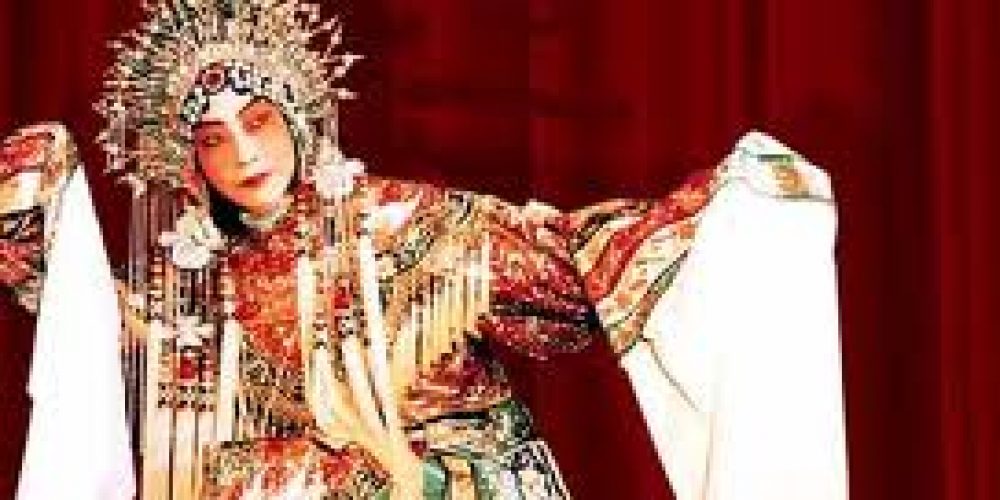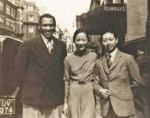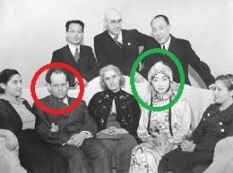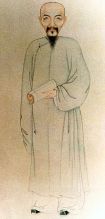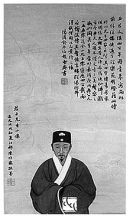NB:
Click here to read the first part of About Mei Lanfang
~~~
Mei Lanfang as a cultural ambassador: Beijing Opera abroad
Throughout his artistic career, Mei Lanfang and his operatic troupe toured the world in order to promote and disseminate knowledge about the art of Beijing Opera among the non-initiated people. These tours led Mei to perform three times in Japan (1919; 1924 and 1956), once in the U.S. ( six-month period between 1929 and 1930) and once in the Soviet Union (1935). Each one of those tours was a great success and contributed to enrich the cultural dialogue between China and the other nations. Mei’s performances were reviewed by seminal art critics of the time, and were received with great enthusiasm by the foreign audiences. Through the critics’ commentaries, the art of classical Chinese drama was compared with other kinds of theatres such as the Greek and the Elizabethan ones, with which they thought it shared several characteristics yet retaining its specificities. As we shall see next, most of the reviewers focused on describing the beauty of Mei’s gestures, trying to capture their rationale and symbolic meaning. These reviews, which are less known to the nonspecialists than the so much discussed Brechtian essay, show quite a different approach to understanding the art of Chinese drama. In fact, whereas Brecht ended up projecting his views on how western drama should be changed onto the conventionalities of classical Chinese theatre, and in so doing he operated a cultural displacement (or “refunctioning”, as observed by Min Tian [1]), other critics such as, for instance, the American drama theorist Stark Young, were interested in understanding the essential dynamics of this kind of theatre. They did not try to superimpose a pre-formed theoretic pattern on it but limited themselves to depict and possibly make sense of the Chinese performing art as they saw it, and in the purest manner.
As previously mentioned, Mei Lanfang went three times to Japan to give performances. Whereas the first and the second visit had mostly a cultural resonance, the third trip, which occurred in 1956, namely in the midst of the Maoist period, had a marked political aim, as well. In fact, at that time the diplomatic relations between the 7-year-old PRC and Japan had long been suspended. Mei’s artistic tour was promoted by the then prime minister Zhou Enlai and played a major role in paving the way for the restoration of ties of friendship between the two countries. On that occasion Mei received several compliments by the emperor’s brother, Prince Mikasa, who also thanked him on behalf of the emperor himself.
Mei’s American tour, which took place between 1929 and 1930 was also extremely successful. Yet, it took around four years to organize it. The idea for this project occurred to a group of American tourists who had watched Mei’s performances as early as in 1925. After returning to the U.S., they praised Mei’s artistic dexterity among family and friends, and on the following year the U.S. Minister to China, John Van A. MacMurray invited Mei to perform in America. He also had a chance to see one of Mei’s newly-composed mythological operas, entitled The Red Snake and the Golden Pin. Whilst in the U.S., Mei also had the wonderful opportunity to perform in Broadway. Besides, he met with several big names in the field of criticism, film and the performing arts. Among the notable people who honoured him with their friendship there were famous film stars such as Charlie Chaplin, Douglas Fairbanks, Mary Pickford, the director Cecil B. de Mille and the Afro-American musician Paul Robeson. Mei also visited many universities where he performed and lectured on classical Chinese drama. His academic activity earned him two honorary doctorates from the University of Southern California and Pomona College.
Mei’s tour in the Soviet Union was organized by the All-Union Society for Cultural Relations with Foreign Countries (VOKS), which invited the Chinese actor to give performances both in Moscow and Leningrad (now St. Petersburg) in March and April 1935, respectively.
Overall, Mei’s role as a cultural ambassador was amply praised and emphasized in the press.
Whilst in the USSR, Mei met several directors, dramatists and drama critics and gave lectures on the acting techniques in Chinese theatre. Amog other things, he gave demonstrations of hand gestures and stage steps, such as the impromptu demonstration given at the Concert Hall in Moscow, which Bertolt Brecht attended and reported in his essay on Alienation effects in classical Chinese drama.
Before the eyes of the world: non-Chinese views on Mei Lanfang’s performing art
U.S. reviewers
John Martin (The New York Times) praised the beauty of Mei’s voice.
John Mason Brown (The New York Evening Post) highlighted the correspondence between Mei’s facial expressions and eye movements and the portrayal of the character’s innermost feelings.
John Brooks Atkinson (The New York Times) stressed the specificity of Beijing Opera with respect to Western drama, with particular attention to its remarkable imaginative power, which he constrasts to the rigidity of our theatres. He maintains that the main difference lies in the performative language characterizing Chinese drama, more than the language proper. He further notices its pictorial quality and therefore likens it to an old Chinese vase or piece of tapestry.
R. D. Skinnen (Commonwealth) observed that Mei’s performing art was not based on symbolism but on something else, which he calls, after Mei Lanfang’s phrasing, “patternism”. He explains that while symbolism, as understood in the West, consists in “representing some object or emotion by some quite different object”, Chinese theatre represents objects and emotions through dedicated patterns abstracted from reality.
Robert Littell (New York World) highighted Mei’s ability to combine several different arts (acting, singing and dancing) into a harmonius whole and in such a way as to transcend the boundaries between these three arts. He then observed, quite correctly, that the combined usage of different arts is an essential feature of Chinese drama as such. Finally, he stated that Mei’s artistic skillfulness is able to transform the stage into a timeless space, whereas his refined acting makes the audience forget that he is a man playing a woman’s role. The critic also compared the visual result of Mei’s quite pictorial kind of acting to an old Chinese painting.
Mary F. Watkins (The Dance Magazine), William Bolitho (New York World) and Ted Shawn praised Mei’s dancing skills, by defining him as a high-class, almost unparalleled dancer.
Stark Young deserves a special mention because he commented on Mei Lanfang’s performing art lenghtily and with great insight in a seminal essay entitled “Mei Lanfang”, which appeared in Theatre Arts Monthly. His comments are precious and worth studying, because they provide food for thought by raising a few interesting points and also because they set themselves as quite an alternative reading to the (certainly more famous) Brechtian analysis.
Concerning Mei Lanfang’s mode of acting, Young insightfully notes that Chinese theatre is not divorced from real life, because the conventional style of acting is actually grounded on the corresponding actions, places and conditions which can be found in everyday life. For instance, he maintains that the emotional shock that he gets from watching the portrayal of death and horror as conveyed by Mei Lanfang is simultaneously stronger than as if he were seeing a photo, and vaguer. This awoval clearly debunks Brecht’s idea that Chinese theatre does not aim at arousing any emotional reactions in the audience.
Further on, Young sets out to describe Mei’s acting skills in great detail and in so doing he acknowledges that it is difficult for the complete newbies to fully understand and appreciate the variety of the conventions used in a Chinese performance. Yet, he is of the opinion that the beauty of those conventional gestures and movements is apparent and can be noticed by everyone.
Still, Stark Young’s most interesting comments concern the issue of realism in Chinese art. To put it simply, he stresses the fact that traditional Chinese drama is not entirely “symbolic” and unrealistic as it might seem. In order to better explain what he means, he draws a parallel between Chinese drama and Chinese painting and sculpture [2]. All these three arts aim to convey only the impression of reality rather than reality as it is, yet, at the same time, they are able to capture the minutest detail of an object, movement or emotion. As Young puts it, “This exact notation is marvellously set into the whole work of art, which taken in its completeness, is ideal and dreamlike. Dexterous realism combined with tradition, convention and abstract pattern.” [3] He further elucidates the essence of Mei Lanfang’s symbolic realism (or realistic symbolism?) by commenting on the latter’s mode of interpreting femininity on stage. Particularly, he observes that Mei’s mode of acting is not aimed at bringing a particular woman to life. Rather, his acting is like a distillation process for he strives to extrapolate and reproduce a range of essential feminine qualities as well as translating them into dance figures, patterns and movements.
Elsewhere in his essay, Young praises Mei’s “idealistic flexibility” [4], which is exemplified in Chinese theatre’s ability to blend the real and the unreal as a means of portraying inner realities such as psychological ghosts, memory, dreams: in other words, the human mind in the profoundest and most accurate way.
Finally, Young indicates Chinese theatre as an example of the “classical mind” because although changes have occurred, they did not occur abruptly. He also points out several elements of comparison between Chinese theatre and ancient Greek drama: “There is the unceasing stylization throughout. There is the intention of beauty, grace or exaltation.” [5] However, Young states that such beauty is not a end in itself, it is not beauty for beauty’s sake but it is aimed at the creation of specific patterns which establish a continuity between an action and the other, a phrase and the other. This helps create an essence, a soul that makes the performance all the more fluid and, utimately, all the more enjoyable.
Min Tian further notices that Stark Young had a chance to meet Mei in his hotel (in the company of Qi Rushan) and Mei confirmed all his impressions on Chinese theatre [6].
U.S.S.R. reviewers
Karl Radek (Izvestia): despite the language barriers, Mei was successful in engaging the audience’s attention to the point that they were all spellbound by his artistic charm.
S. Radlov: he highlighted the emotional quality of Chinese theater, namely its ability to give an accurate psychological portrait of a character.
Bertolt Brecht*** (see my previous articles here and here)
Konstantin Stanislavsky: he and Mei met several times to discuss and exchange their theatrical experiences. They soon became good friends. Stanislavsky defined Mei’s art as “free movement guided by the laws of the art”.
Vsevolod Meyerhold: he applauded Mei Lanfang’s ability to portray true femininity on stage even better than a female performer could do. He also likened Chinese theatre to Pushkin’s quote that “dramatic art is based on unverisimilitude”, and went on to says that “Whoever sees the work of Dr. Mei Lan-fang will tell that the great power of rhythm this ingenious master of the stage displays is not felt on our stage. […] We do not have a sense of time.” [7] In a conversation with student graduates of GITIS (The Russian Academy of Theatre Arts), he maintained that Chinese theatre is based on movement. Besides, he recognises a realistic substratum in the movements performed in both Japanese and Chinese theatres.
Sergeij Ejzenštein: he made a few scenes of one of Mei’s plays into a movie, which has regrettably gone lost. He even gave to Mei a copy of a British journal (Close Up), which featured an article of his entitled “The Principle of Film Form” and which he dedicated to the Chinese performer “the greatest master of form”. Most importantly, he wrote an article in praise of Mei Lanfang’s charming theatrical art and defined the great Chinese actor as “The Enchanter of the Pear Garden”. In this essay he stresses the symbolic quality of Mei’s art, downplaying the realistic overtones: “pure realism is removed from the performance and the realistic atmosphere is banished from the stage.” [8] Next, he describes some of the techniques for depicting certain actions such as passing through a door, sleeping, fighting (duels), and eating. He concludes by the idea of learning from Chinese drama in order to enrich their pathway toward socialist-realism.
Sergei Tretyakov: in his article “Mei Lanfang – Our Guest”, he states that “His [Mei’s] embodiment of the female form becomes more psychological than the iconic image of classical theatre.” [9]
~~~
*** Bertolt Brecht was a German national but at the time Mei Lanfang visited the Soviet Union he was on voluntary exile in Moscow.
~~~
Endnotes
[1] See Min Tian’s essay “The Effect of Displacement: Bertolt Brecht’s Interpretation and Refunctioning of Mei Lanfang’s Art”, in Tian, Min (ed.). China’s greatest operatic actor of female roles: documenting the life and art of Mei Lanfang 1894-1961. Lewiston, NY: Edwin Mellen Press, c2010.
[2] A similar parallelism was highlighted by Huang Zuolin, who extended the concept of xieyi 写意 (to capture the essence), which is typical of Chinese painting, to the Chinese theatrical art as well.
[3] Young, Stark. “Mei Lan-fang”, in Tian, Min (ed.). China’s greatest operatic actor of female roles: documenting the life and art of Mei Lanfang 1894-1961. Lewiston, NY: Edwin Mellen Press, c2010, 121.
[4] Ibid., 123.
[5] Ibid., 127.
[6] Ibid., 129.
[7] Meyerhold, Vsevolod. “On Mei Lan-fang: Artist on Tour”, in Tian, Min (ed.). China’s greatest operatic actor of female roles: documenting the life and art of Mei Lanfang 1894-1961. Lewiston, NY: Edwin Mellen Press, c2010, 143-44.
[8] Ejzenštein, Sergeij. “The Magician of The Pear Orchard”, in Tian, Min (ed.). China’s greatest operatic actor of female roles: documenting the life and art of Mei Lanfang 1894-1961. Lewiston, NY: Edwin Mellen Press, c2010, 155.
[9] Tretyakov, Sergeij. “Mei Lan-fang – Our Guest”, in Tian, Min (ed.). China’s greatest operatic actor of female roles: documenting the life and art of Mei Lanfang 1894-1961. Lewiston, NY: Edwin Mellen Press, c2010, 160.
Bibliographic Details
Tian, Min (ed.). China’s greatest operatic actor of female roles: documenting the life and art of Mei Lanfang 1894-1961. Lewiston, NY: Edwin Mellen Press, c2010.
Wu, Zuguang, Huang Zuolin, and Mei Shaowu. Peking Opera and Mei Lanfang: a guide to China’s traditional theatre and the art of its great master. Beijing, China: New World Press, 1981.
